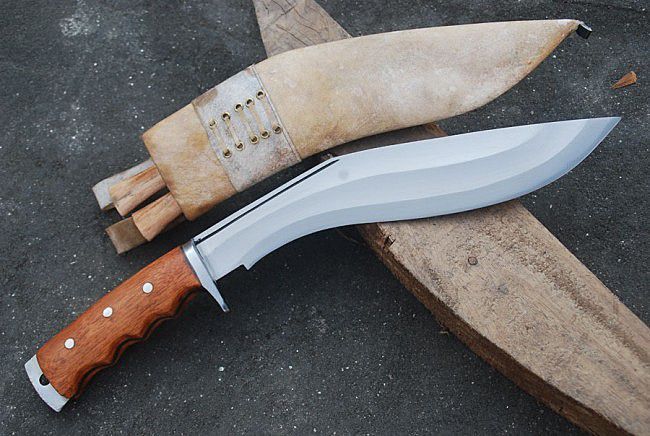How To Sharpen Kukri
The kukri is one of the most unique and deadly knives a person can use. Their wicked curved blades and superior cutting ability make them a great piece for weapon collectors, hunters, outdoorsmen, and anyone who can appreciate a good knife.
While it’s unlikely you’ll be getting into a fight with one of these, proper maintenance is important for any tool. If used for things like camping, your kukri can become dull and damaged the same way any utility knife can.
When that happens, it can be a bit difficult to figure out how to sharpen it. The same design that makes it so aesthetically pleasing ends up betraying you, as it’s not exactly easy to take a curved blade to a whetstone.
Fear not, though. The process of sharpening a kukri knife is actually surprisingly simple if you’ve got an idea of what you need to do. If you’d like to do some maintenance on your favorite blade, here’s a handy guide on how to sharpen a kukri that you simply can’t pass up.
Tools
To properly sharpen a kukri, you’ll need a few basic items. While they might sound strange at first, they’ll make sense once you’ve gotten into the thick of it.
Kukri knife that needs sharpening.
Protective gloves.
Rubber mouse pad.
Sand paper sheets (24 grit to 1,000 grit).
Blade oil of choice.
Soft cleaning cloths.
Sharpening Guide
Once you’ve gotten all your tools together, you can start sharpening your kukri.
Step 1: Protection
Before anything else, you’ll want to ensure you and the area around you is safe to sharpen in. Put on the protective gloves you collected earlier and find yourself an open area without people, animals, or anything easily breakable. This is an ideal area for sharpening as it lowers the risk of damaging anything if you’re careless.
Step 2: Grip
Take the coarsest sandpaper sheet you have and place it on the back of your rubber mouse pad (the paper should have its gritty side facing out with its smooth side against the textured rubber of the mouse pad). Fold these in half and firmly grasp them in your hand. When placed around the blade of the kukri, it should be like a hot dog bun surrounding the sausage.
Step 3: Sharpen
Slowly and carefully run the sandpaper up along the edge from the base of the blade to the beginning of the curve, keeping your grip firm the entire time to shave off layers of metal. Both for ease of sharpening and for safety, you’ll want to do each half of the blade separately.
Do around ten passes on each half of the blade, moving to a finer grit of sandpaper after each completed cycle. If the sandpaper gets worn out before you can complete sharpening, replace it with another sheet of the same grit or simply move up a grit. Be careful that you are only sharpening the edge of the blade and not the entire knife as you’ll scuff and damage the surface of the metal.
As you work your way up to finer and finer grits of sandpaper, the blade will become progressively sharper. This is why it is crucial you keep a firm grip on the edge while you sharpen to avoid slipping and cutting through the paper into your glove and/or hand.
Step 4: Wash
After sharpening with each grit of sandpaper up to 1,000, you should be left with a very sharp kukri knife. Rinse the blade off in cold water to remove sandpaper remnants and metal shavings. Dry thoroughly with a soft rag.
Step 5: Oil
After cleaning the blade, you should also oil it. Simply apply a few drops of oil to each side of the blade and rub it across the knife with a clean cloth. This helps to protect the blade from damage in the future and helps it to cut better.
Once oiled, you can safely store the blade until you need it.
In Conclusion
While it might seem a bit difficult to sharpen a kukri knife, it’s actually a very simple process when you get right down to it. Its shape can make it difficult to sharpen on a traditional whetstone, so using flexible sandpaper and hand protection circumvents this while still getting a sharp edge.
Did this guide help you improve your sharpening technique? What are your favorite knife sharpening tricks? Leave a comment telling us about it. Also, remember to share this guide with a friend who’s been neglecting their knife care.
Read more about kukri:
Blades.guru
